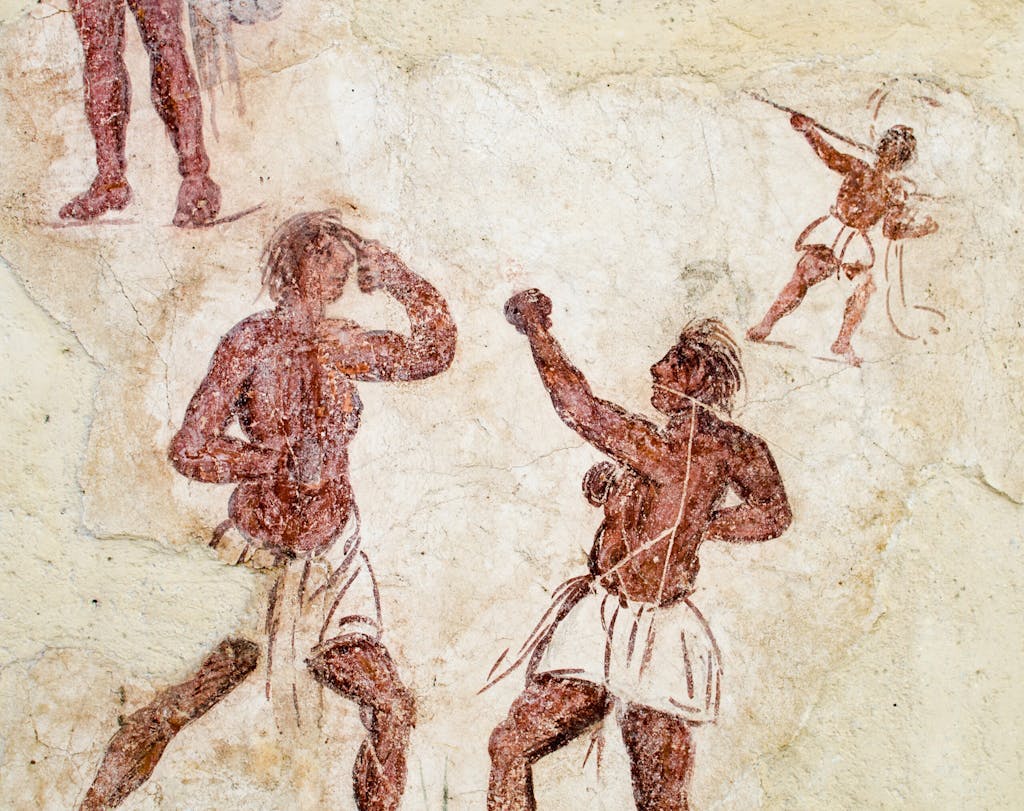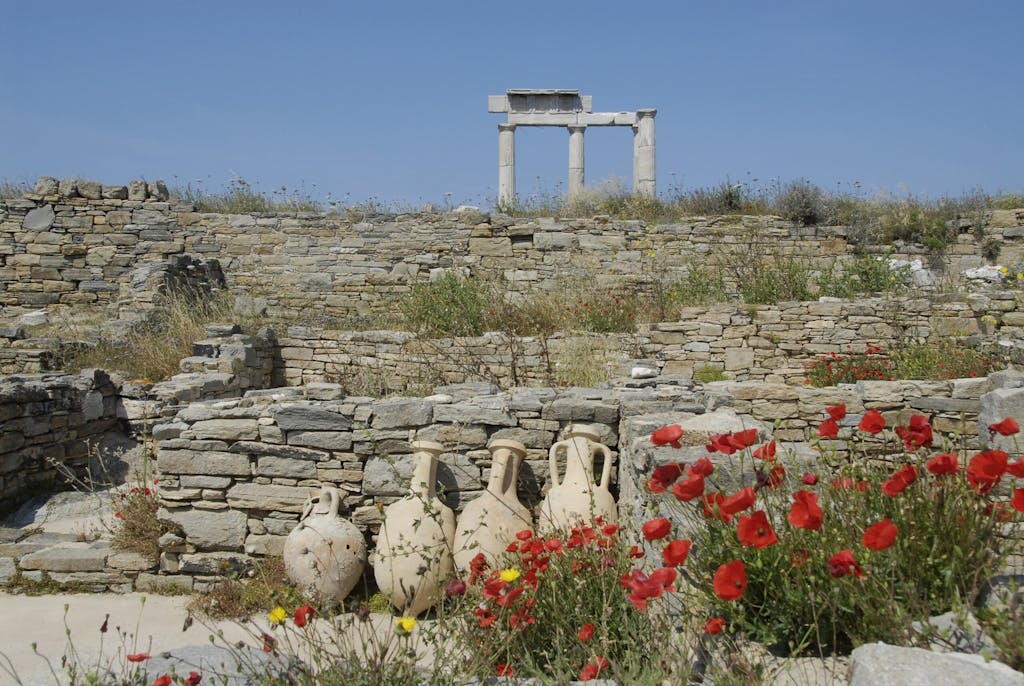Greece’s Otherworldly Delos Reveals the Long, Unfinished Odyssey of Humankind
I first visited Delos in 1976, in the middle of a post-undergraduate year teaching on a fellowship at Athens College. After numerous adventures in other parts of Greece, I was struck by the stark simplicity and purity of this tiny island in the center of the Cyclades.
“There are no tavernas, no discotheques, no pleasure boats at anchor; nor are there churches, windmills, or goatherds,” I wrote in my journal back then. “Delos, three miles long and less than one mile wide, is a parched, rocky island of ruins.”
Forty-eight years later, I was finally able last summer to return to Delos, and it was still a parched, rocky island of ruins, mesmerizing in its simplicity. As I wandered its paths and hills, the absence of distractions impelled me to focus: this fluted bone-white marble column; that stunning multicolored mosaic; these rugged remnants of a temple; that solitary, blazing red poppy; the surrounding, shining Aegean Sea.
This simplicity invested every artifact — stubby pillar, cracking archway, broken bit of statue, chiseled inscription — with a palpable presence and an alchemical clarity. The air hummed with antiquity.
The mingling of mythology and history

As I explored the ruins, I recalled the mythological tale that had catapulted the island into a position of unparalleled power: According to Greek myth, Delos was originally a roving island when Leto, mistress of Zeus, the most powerful of the Greek gods, landed there racked with birth pains. Poseidon anchored the island in its present position while Leto brought forth Artemis, the goddess of the moon and the hunt, and Apollo, the sun god and protector of light, art and prophecy.
Apollo eventually became the most revered of the Greek gods, and religious devotion, coupled with the island’s central, protected situation in the Aegean Sea, established Delos as an important religious sanctuary. To preserve its religious role, Delos had to remain pure, and accordingly, in the 6th and 5th centuries B.C/B.C.E., the Delphic Oracle proclaimed that no one should die, fall sick, or give birth on the island. Just as Poseidon had anchored the island geographically, the Oracle’s prophecy anchored the parched pinprick of land as a uniquely sacred and untouchable place.
‘It’s part of the island’s atmosphere’

Even today this mythology surrounds you as you explore Delos. As elsewhere in Greece but with an even more focused energy here, the mythical infuses everything: You walk in myth and breathe in myth; it is part of the island’s atmosphere.
Astonishingly enough, because of this mythological status, from the 8th century B.C./B.C.E. to the 1st century B.C./B.C.E., diminutive Delos was the thriving center of the Mediterranean world, first as a religious center and later as the religious, cultural and commercial hub of an empire that stretched from Italy to the coast of Asia Minor.
It’s mind-stretching to see the evidence of this as you wander among the ruins, discovering an Egyptian temple and statues here, a Syrian sanctuary there, Roman villas and Latin inscriptions in one quarter, Thracian shrines in another, all vivid testaments to the bustling conjunction of cultures that once bargained, beseeched and banqueted here.

Ruins take on a ‘strange life of their own’
This boisterous past is rendered even more poignant by its deserted present: The island is uninhabited today, and the only reliable regular public transportation is a ferry from Mykonos. On my day-long exploration last summer, I never saw more than two dozen visitors, and in the afternoon, I was able to wander absolutely alone for two hours. It felt like my secret place.
This isolation and solitude, combined with the extensiveness and diversity of the ruins themselves, lend the site a special power, propelling you through time.

On my visit last summer, I experienced one kind of time travel as I opened my tattered old journal and read a description I could have written that morning: “Wandering the ruins of this once-boisterous center, I found temples both plain and elegant, Greek and foreign; massive marketplaces studded with pedestals where statues once stood, now paved with poppies; a theater quarter with vivid mosaics depicting actors and symbolic animals and fish; a dry lake ringed with palm trees; a stadium and a gymnasium; storehouses and quays along the waterfront; and an ancient suburb where merchants and ship captains once lived: the haunting skeleton of a Hellenistic metropolis.”
Near the end of that first visit almost half a century ago, I experienced time travel of another kind: “As I walked on and the setting sun cast the halls and walls in an orange-pink light, the ruins seemed to take on a strange life all their own. What had been eerie desolation became an intense timelessness, a sense of communion with other peoples and other eras.
“My boots crossed rocks other sandals had crossed; my hands touched marble other hands had touched. When I reached the mosaics, they seemed a living thing, green-eyed tigers and blue dolphins, flowers of every shape and color, the same to me as they were to the countless merchants and artisans who had admired them centuries before.”

These layers deepened last summer. At one point, I sat on a marble pedestal, took out my new journal, and wrote: “I’ve finally returned, almost half a century later, and my boots again walk rocky paths other sandals have walked; my hands touch cool, rough columns other hands have touched. I am looking at the exact same mosaics I saw five decades ago — green-eyed tigers and blue dolphins, flowers of every shape and color — and once again, they seem living things, transporting me out of time.”
As the day waned, all these elements — the Oracle’s proclamations, the astonishing history, the bone-white temple columns and multi-colored mosaics, the absence of inhabitants and tourist throngs, the conjunctions of past and present — swirled in my mind. And as the sun again cast the halls and walls in an orange-pink light, I felt once more suspended in time: wrapped in the presence of the past and the long, unfinished odyssey of humankind.
